Fly Fishing Tactics for Bass in the Fall
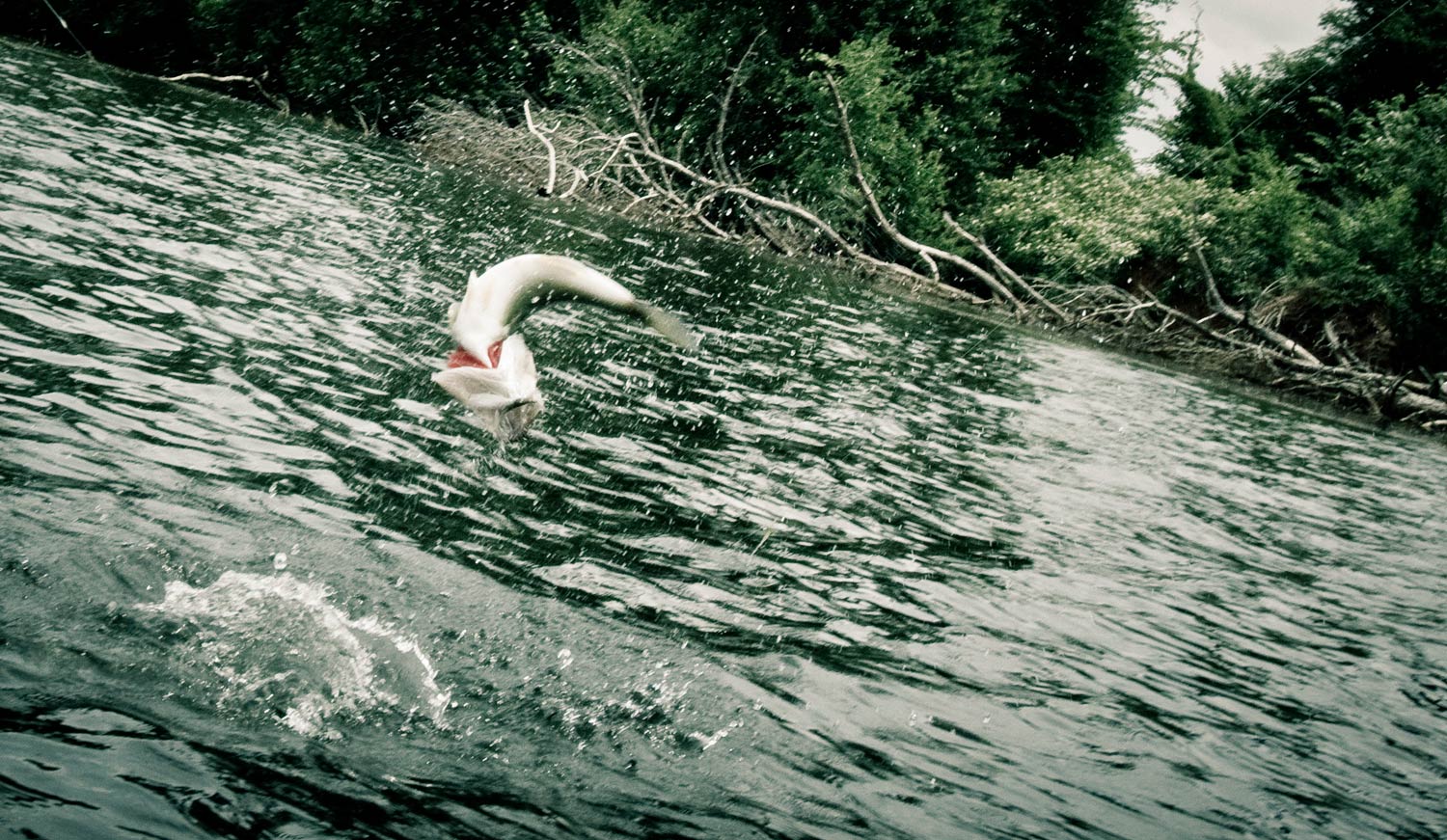
Fly Fishing for bass in the fall is one of my favorite times of the year to hit the lake. The main reason I love chasing bass on the fly during the fall, is because a lot of the forage food (ex. threadfin shad, gizzard shad and blueback herring) that the bass fatten up on in preparation for the cold winter ahead, start migrating into shallower water in search of cooler waters. If you bass fish, you probably already know that where ever the food goes, the bass generally follow in hot pursuit. In the Southern Appalachian Mountains, where I live, we have lots of deep water mountain lakes, and when the bass go deep in the summer, it can be extremely difficult to catch them with a fly rod. And even with full sinking fly lines, deep water still poses a real challenge for fly anglers, because it’s so hard to control your presentation and fly depth throughout your retrieve.
In the fall, however, fly anglers should pay less attention to deep water on the main lake and start focusing their time fly fishing up in the creeks and backwater coves, found in the fingers of the lake. The migration of the forage food into the shallow water areas of the lake is great news, because it’s much easier to target the following bass with fly fishing gear. When the days begin to get shorter and we start getting successive nights with temperatures dropping below 50 degrees, fly anglers should start looking for the fall bass bite to heat up. Below are some 8 tactics I use to help me catch bass with fly fishing gear during the fall months.
Read More »Check Your Fly Rig!
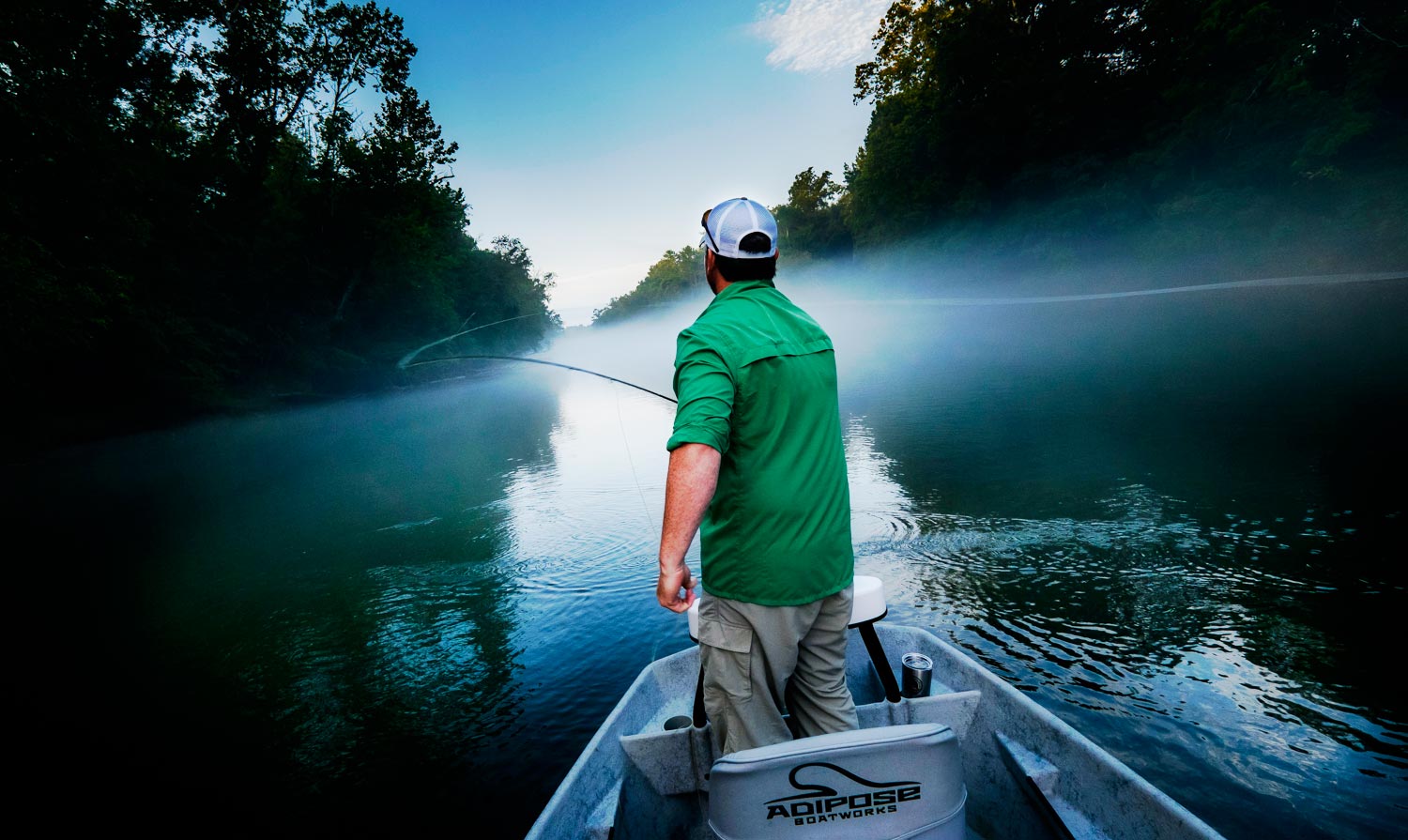
By Justin Pickett
The sun is only a faint glow below the horizon as it prepares to make its ascent into the sky.
I launch my chunky, articulated offering into the twilight.
Slicing through the fog, it lands mere inches from the bank.
Soon, will come the moment of truth.
That split second when man and fish will come to learn their fate.
Strip, strip, strip.
A menacing silhouette emerges from the darkness.
Strip, strip. Flash! Strip, strip. Bam! Big hit!
The hook set is on point. The rod bends abruptly.
The surly Brown shakes his head angrily at the unpleasant sensation of resistance.
It is the moment that I have anticipated all morning. All week.
It is this moment that will haunt me for some time, for my net is empty and my fly is lost.
It happens. Trout, among the many other species of fish, will get the best of us sometimes. No matter what we do right, there are always those fish that just seem to be living right and never make it to our nets. The scenario described above, however, may not have ended the way that it did had I just checked my rig thoroughly before hitting the water.
It was still dark as I gathered all of my gear and transferred it into the Adipose. I didn’t rig my rod before leaving the house like I had planned so, when I got to the parking lot, I rushed through my normal routine of checking through my gear. Instead, I just threw everything together so I could get on the water ASAP. However, of course, hurrying through things tends to bite you in the ass later on, as it did on this particular morning. The bite in the ass being the humiliating loss of a very large brown trout.
That big brown slab shook his head hard after a short sprint downstream. Suddenly, just as he began a second drag-stealing run, my line went slack
Read More »Blow Up Bobbers
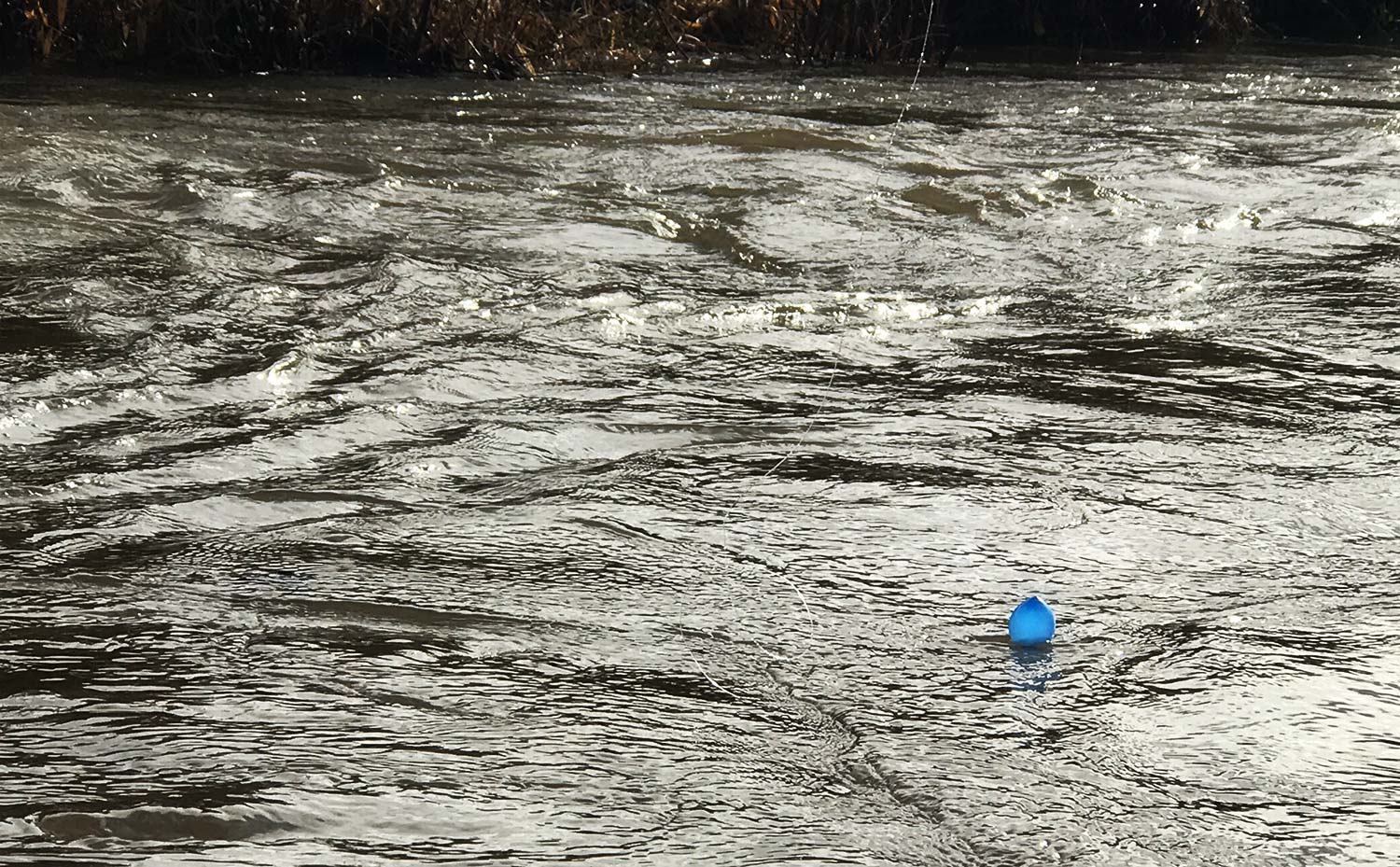
By Justin Pickett
Not too long ago I received a phone call from a good friend of mine asking if I could help with a guide trip for a handful of folks who were on the books. It was a group of five anglers, and the second guide that he had booked fell ill and had to back out. I didn’t have anything on my plate the next day so I gladly agreed to pick up another day on the water.
It had rained overnight, which in my eyes is a good thing so long as it isn’t one of those earth-carving downpours that blows rivers out to the point “ain’t no way in hell I’m going near that water.” The right amount of rain will stain the water and raise the flows just enough to get trout feeling frisky, causing them to lose their inhibitions and feed with abandon. For me, the conditions I just described make my stripping hand itch. I reach for the heftier sticks, sinking lines, beefy tippet, and beefier flies. Sex Dungeons and Boogie Men come to mind when I think of days like these. However, when you find yourself on the water with a client, things have to change. You have to play to their strengths, and, on this day, the best plan was to nymph. With the day’s conditions, we would be afforded the ability to have our clients throw larger indicators that would float big, gaudy flies without spooking an entire run.
Prepared for a successful day, my fellow guide, Noland, and I discussed the plans for the day and basically split the water in half so we didn’t beat all of the water to death. Fishing was good and soon came lunch. On our way back to the trucks we encountered Noland with his group of anglers and stopped to take a gander and engage in some small talk. As I’m talking with Noland, I noticed something funky about his client’s rig. Something just seemed off about it as he picked it up off the water and began his next cast. As this gentleman’s flies and indicator hit the water it became a little more obvious as to why I had this impression.
“What the heck kind of indicator is that?, I asked as I turned back towards Noland.
With a smirk on his face, Noland replied with, “it’s a balloon.”
Read More »Winter Carp

Let’s start here. Like every other preconception about the common carp, the notion that this is a warm water fish is patently false.
I’ve caught them every month of the year. In South Dakota. I’ve caught them, in numbers, while it snowed. I’ve caught them in wild places, uninfluenced by warm water discharges, bottom release dams or power plants. I’ve watched them feed under ice shelves, tail next to snow banks and crawl with their backs exposed in the only open water for a mile. As McTage Tanner once wrote and often preaches: Next to trout, there is no better flyrod target in the winter than carp.
Carp are known for their ability to tolerate extreme water temperatures. For some reason, we’ve equated that with a high survival rate in extraordinarily hot water. But the opposite is also true. Carp not only tolerate, but thrive in cold water environments. That is to say, they can and do actively feed in cold water just like they do in hot. Research suggests that they begin feeding actively in water as cool at 40 degrees and continue to pick up metabolic steam as the temperature increases. That puts their active feeding range, at the low end, closer to that of the Northern Pike than the Largemouth Bass. An active feeding range that low means carp are a viable flyrod target throughout the winter for most of the country. For those not willing to hang up the rod for 7 months and tie flies until spring, here are a few tips for stalking large tailing fish in shallow water during cold weather.
Look for moving water. River or stream fishing for carp is an extremely exciting proposition any time of year. Large fish in small water makes for challenging fights and wonderful sight fishing. Never is this more true than in the winter. Moving water allows an angler opportunities to find more addressable carp more often for a few reasons. First, moving water tends to stay open longer than still water. While the lakes are frozen, a swift small stream may be open; obviously a requirement for flyfishing. More importantly, carp that live in a small river or stream are confined to that relatively shallow water year round. When warmer, deep water is available, the carp will head there during low water temps. But in confined spaces, the carp will thrive wherever they live. To be clear, they will still congregate in the deepest pools on the stream just like any fish, but they will head for the shallows earlier and more often in small spaces.
Read More »Hellgrammite, The King Kong of Aquatic Insects
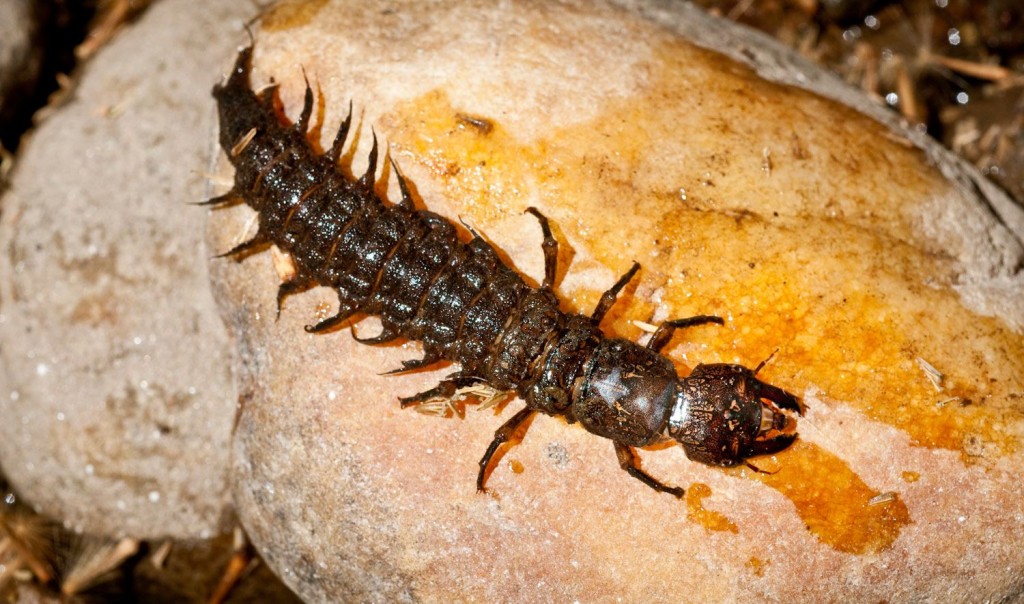
I was on the water trout fishing the other day, when my buddy Erik Ashlin said, “it was just about this time last year, when all the hellgrammites began crawling into the shallows to begin their pupation.
Let me flip over a rock and see if I can find one real quick, these guys are wicked looking”. No joke, the first rock Erik turned over, this freaking giant 3″ Hellgrammite was laying there with its jaws of life (mandibles) snapping. It was very clear it was gesturing, “come on, get closer…, let me get a piece of you”!
If you ever get the opportunity to examine a big Hellgrammite up close, there will be no doubt in your mind that the Hellgrammite is the King Kong of all aquatic insects. Be careful handling them because they can pack one hell of a painful pinch capable of breaking the skin. Hellgrammites are like a five course meal in terms of food value to trout. I’d lay a bet they pack every bit as much caloric worth as sculpins and crayfish do. Great times to fish hellgrammite imitations are during high flows after heavy rains. During these conditions, they often get dislodged from under rocks and swept down stream. Hellgrammites are also very vulnerable during behavioral drifts, when the larva are searching out new feeding grounds or better water conditions.
If you’re trying to tempt a trophy brown trout, rainbow trout, or smallmouth bass into eating, you can’t go wrong with a hellgrammite imitation. That being said, Hellgrammites shouldn’t be used as your everyday searching pattern. Somedays you’ll find
Read More »Bonefish On Bamboo
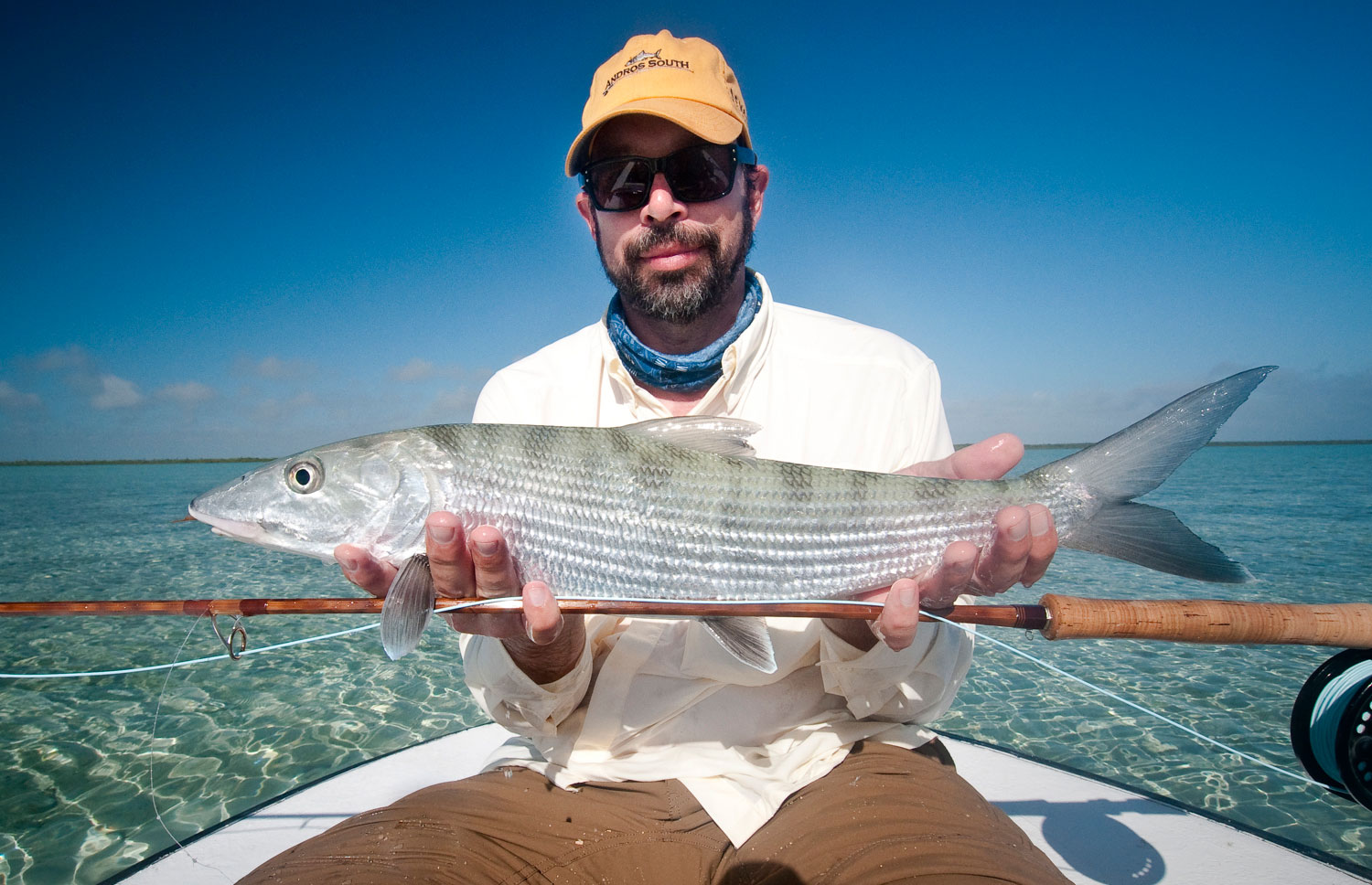
I’LL BE HONEST, WHEN BROWER MOFFIT PUT THIS BEAUTIFUL, FLAMED, THOMAS AND THOMAS NINE WEIGHT SALTWATER PROTOTYPE CANE ROD IN MY HAND MY EXPECTATIONS WERE LIMITED.
Saltwater bamboo? This has got to be a gimmick, I thought. A rod designed to separate some wealthy fellow from a sizable chunk of cash rather than connect him to a fish. After a day fishing it, I’m ashamed of that thought. I loved this rod the first time I cast it. The second time I cast it, it brought me a bonefish. Now, I’m not only prepared to tell you it’s no gimmick, I’m prepared to tell you how it’s better than graphite.
Before you assume that I’ve lost my mind, I’ll offer you this disclaimer: if you are only going to own one saltwater rod, this is not it. The T&T saltwater bamboo is a special purpose rod. On those days when you are out on the flats and the wind is blowing 30, hell 15, this is not the rod you need. Anyone who fishes the salt can tell you, there are a whole lot more of those days than calm ones. On the other hand, anyone who’s fished those calm days can tell you what a challenge they are. A windless day on the flats will redefine the word spooky.
As fate would have it, the day I fished the saltwater prototype was just such a day. Calm and clear after a week of tough weather. The fish were spooky. Long casts and delicate presentations were what was needed if we were going to feed some fish. Luckily, I had the right stick in my hand.
Read More »Fish Every Cast!
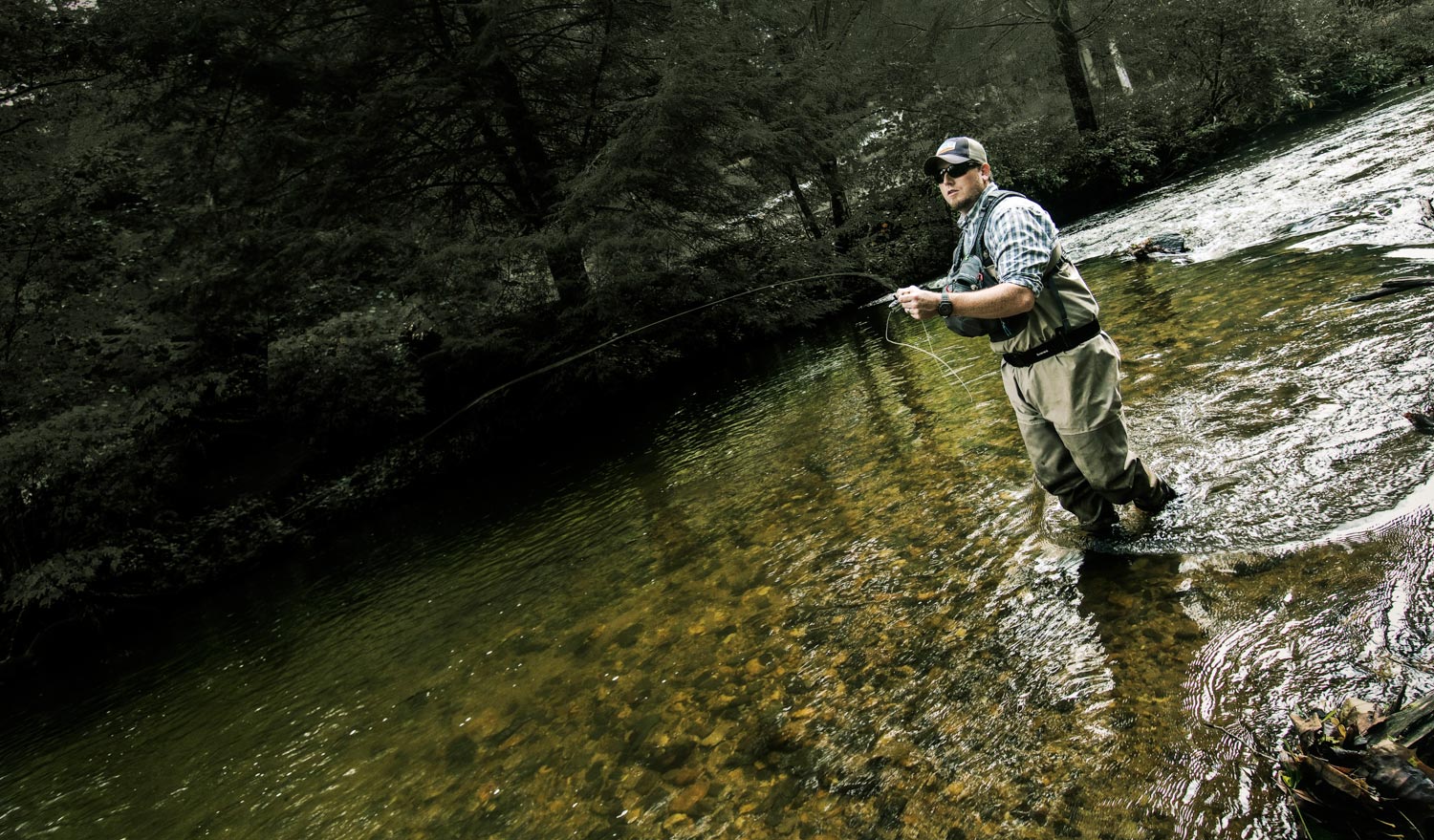
By Justin Pickett
From the great casts and the perfect drifts, to the ugly presentations and the drowned dry flies, if those flies hit the water, let ‘em drift!
Just about every day that I spend on the water with a client, I’ll find myself, at some point, explaining to them the reasons why I want them to fish each and every cast to the very end.
Flies only catch fish when they are on, or in, the water. Well, at least 99.999999% of the time anyway. All too often I see clients and friends lay their flies on the water, only to immediately rip them off the surface in order to make another presentation. If it’s a buddy of mine, I’ll often give ‘em some grief for it. However, more times than not, it’s a client, which brings me to a stopping point in order to educate them on why I don’t want them doing this.
For one, the act of landing flies on the water, whether it be a single dry or a gaggle of nymphs, and then ripping them off the water makes quite a commotion. The noises, ripples, and splashes that occur from essentially ripping a clothesline from the surface will no doubt either spook the trout you are fishing to, or at least alert them that the day’s contestants have arrived to play the game. If the flies hit the water, leave ‘em! Wait for them to drift out of the run, or at least well downstream of the fish, before picking them up to regroup.
Secondly, take your time and regroup. Yanking your flies from the water only to cast again without changing anything isn’t likely to make the next presentation any more successful. If you land your flies in a less than desirable location, let them drift out before taking them off the water and then take the time to makes adjustments before making your next presentation. Not taking the time to make adjustments only sets you up to likely making another undesirable cast. Move your feet, rotate your shoulders, check your distance. DO SOMETHING! Remember the definition of insanity? Take your time and maximize your chances to succeed.
The third thing that I emphasize to my clients is
Read More »Stop Dropping Your Rod Tip Once And For All: Video
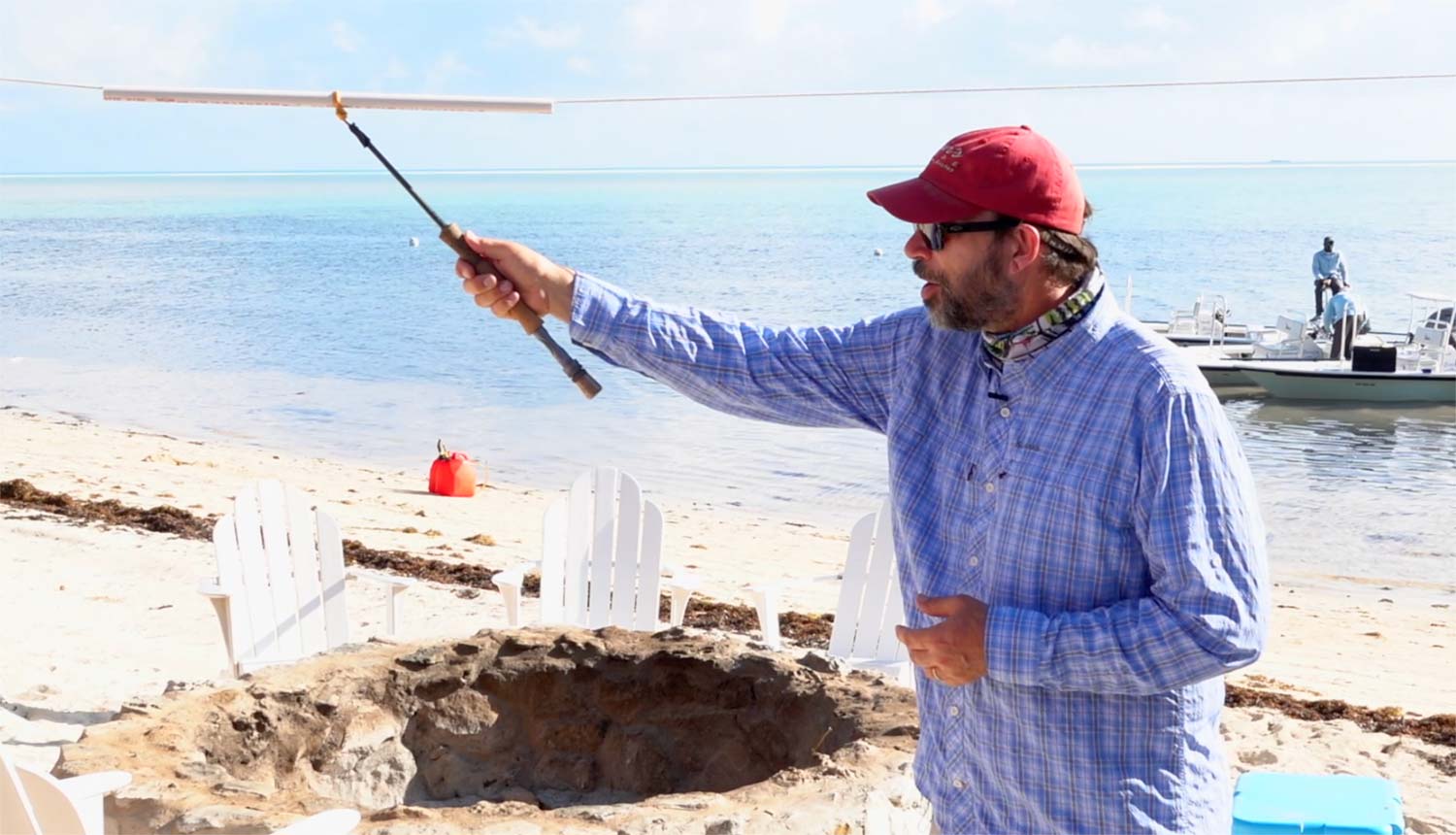
If you’ve ever been told that you are dropping your rod tip, waving your rod, or that you need to shorten your stroke, congratulations, you have the most common casting problem in fly-fishing.
Most fly casters struggle to keep their rod tip traveling in a straight line. Usually a bad habit we picked up casting gear rods as kids. If you can’t make a tight loop or your leader piles up when your line hits the water, this is probably the problem you’re having. It’s extremely common. Don’t beat yourself up over it, just fix it.
Tim Rajeff showed me how to make this simple practice setup, that fixes this problem once and for all. It’s a brilliant solution because it doesn’t involve talking about it. It just trains your muscles to make the right stroke. It’s one of the best things you can do for your fly casting. I use it all the time, when I teach casting and I see the difference.
WATCH THE VIDEO AND STOP DROPPING YOUR ROD TIP ONCE AND FOR ALL.
Read More »8 Common Mistakes Anglers Make Fighting Trout
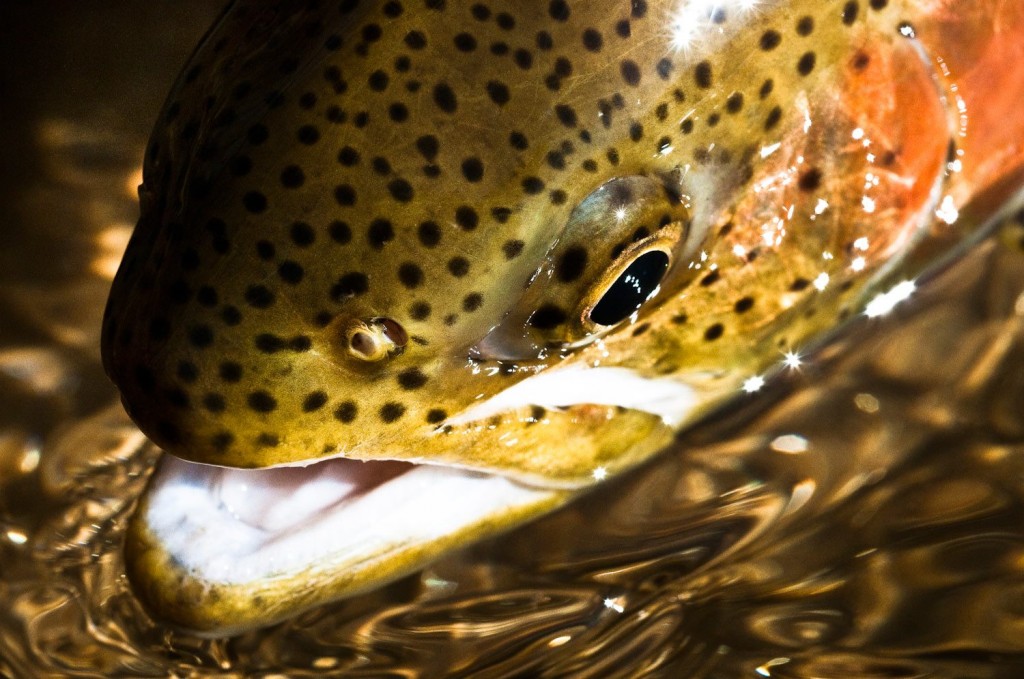
If I looked backed on my early fly fishing days and had to grade my fish fighting skills, it would yield a discouraging report card.
I lost way more fish than I actually landed during those first few years after picking up a fly rod. I’ll never forget how tense and anxious I was every time I’d find myself hooked up with a nice trout. It seemed like every second of the battle I was terrified that I was going to lose my trophy. In turn, I constantly second guessed my fighting instincts, I wouldn’t follow after my fish if it swam upstream or downstream of me, and I knew very little about the correlation between rod position and applying fighting pressure. Furthermore, I was really clumsy when it came to clearing my excess fly line and reeling in the fish. I always had a hard time figuring out when it was a good time to do that. When all said and done, I bet I only landed one or two fish out of every five fish I hooked during my rookie days. That’s not so hot, probably a D average if I was grading myself extremely leniently. We’ve all been there at some point during our fly fishing career, some of us may even find ourselves with that D average right now. Here’s the positive outlook though, most trout that are hooked and lost during the fight can be linked back to a handful of common mistakes. Yet, most of the time, they all can be easily avoided if you pay close attention to what you’re doing when you’re fighting a trout.
Mistake #1 – Not being in the hook set ready position
I know it sounds elementary, but during my early days, I would often find myself fumbling around with my fly line during my drifts. I didn’t always have my fly line secure in my rod hand, and that usually put me with too much slack in my fly line to pull off a solid hook set. I see anglers all the time during their drifts holding their fly line in their stripping hand only. Bites often come when we least expect them. To increase your chances of getting a good hook set and landing the trout, always make sure you’re in the hook set ready position. Get in the habit of putting the fly line in your index and middle finger on your rod hand immediately after you present your fly. This will have you ready to set the hook the instant you get a bite, and you’ll find your line management will improve.
Mistake #2 – Anglers fail to keep tension after the hook set
Not all the time, but more times than not, trout will swim towards you after being hooked, and it’s critical that you keep your rod tip up and immediately begin stripping in your fly line after the hook set. Doing so, you’ll have a good chance at eliminating the slack and maintaining tension on the fish. Instead of stripping, some fly anglers feel compelled to swing their body around and begin moving away from the fish after setting the hook. This puts the angler out of position, shuffling their feet awkwardly and also doesn’t allow them
Matt McCannel’s Neon Nightmare
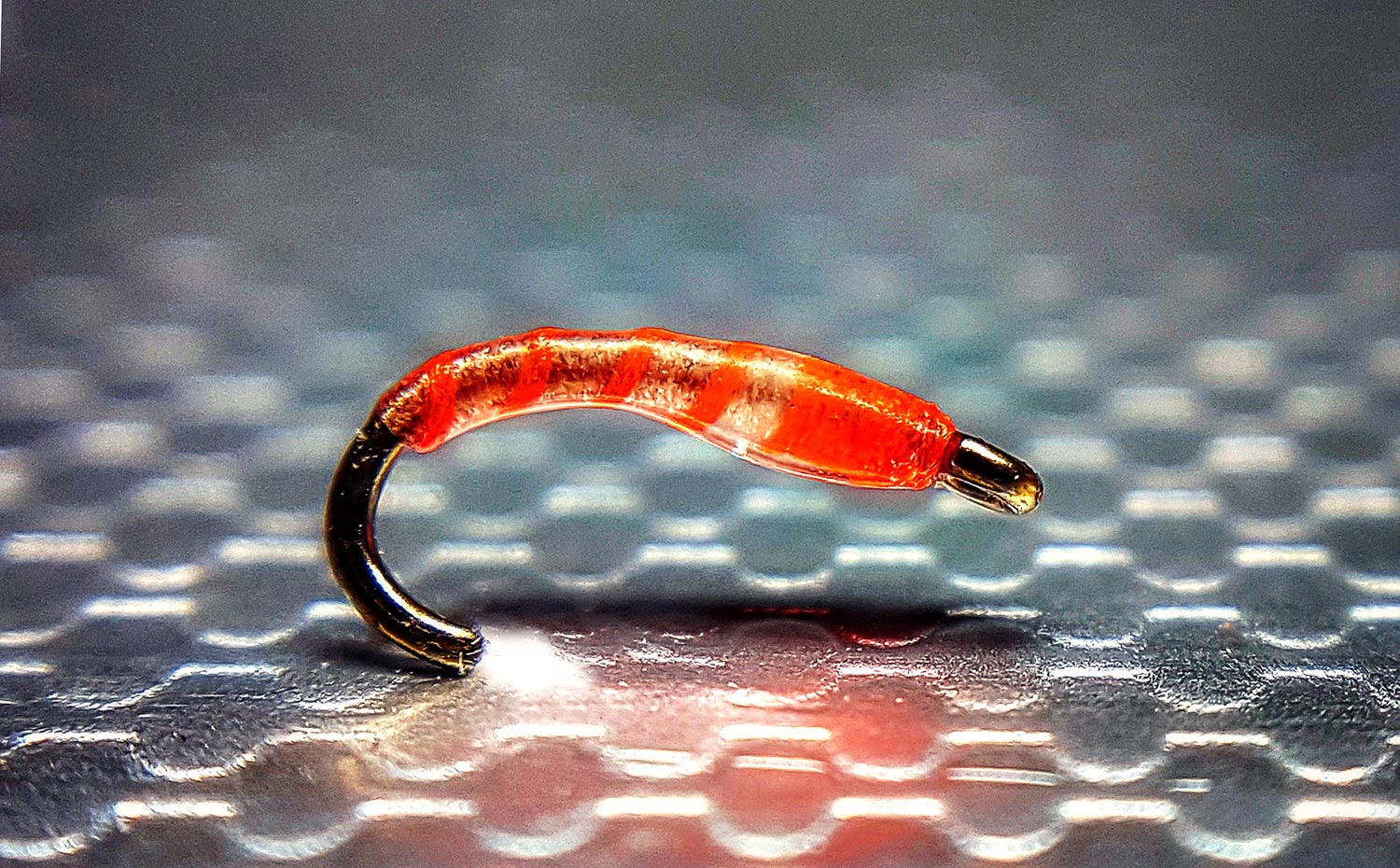
By Bob Reece
When connecting a person and a fish is the foundation of your job, the fly that you use matters. The pattern design as well as the hook that it’s founded upon must both deliver. As a Sage Ambassador, Simms Ambassador, head guide for Rigs Fly Shop and Umpqua Signature Fly Designer, Matt McCannel has built a career out of successfully hooking clients into significant fish. During his journey to this point in his career, Matt has created several highly productive trout flies. One of his most recent creations is the Neon Nightmare Midge.
As a guide in Ridgeway, Colorado, Matt often works on technical tail waters. He needed a midge pattern that incorporated Pink and Orange. This motivation led to the creation of the Neon Nightmare. The incorporation of those colors into a realistic profile has proven itself at catching even the most finicky trout. Its foundation of the Tiemco 2488H hook makes it possible to land those same fish. I carry a dozen of each color in sizes 18-22 on all of my tail water trips. This simple and effective tie should be
Read More »